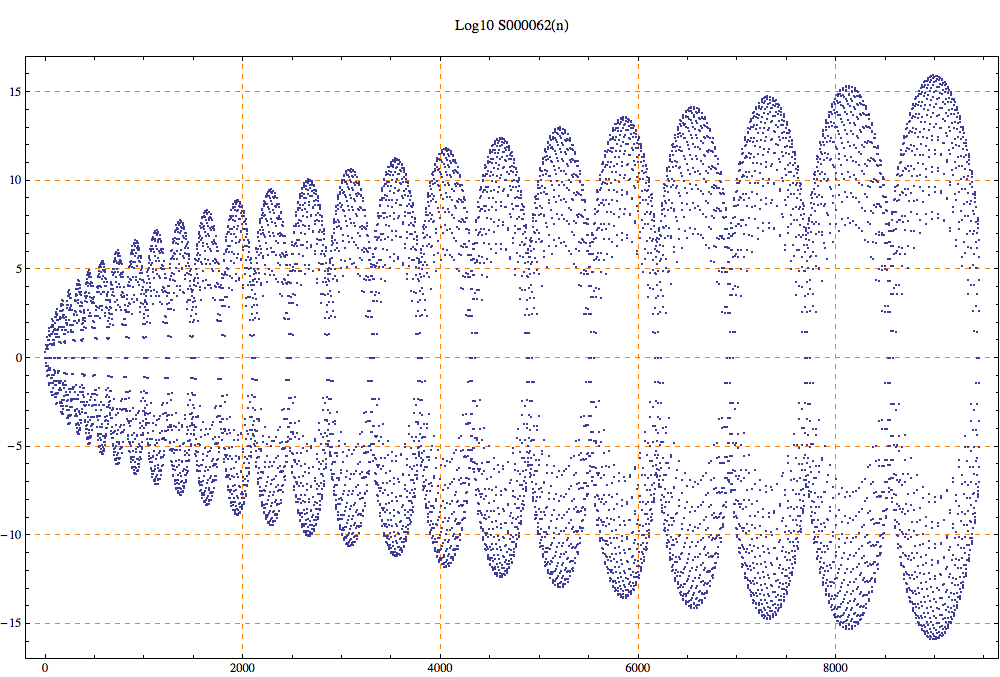Inverse of the symmetric n x n matrix of binomial coefficients in S000061.
1, 2, -1, -1, 1, 3, -3, 1, -3, 5, -2, 1, -2, 1, 4, -6, 4, -1, -6, 14, -11, 3, 4, -11, 10, -3, -1, 3, -3, 1, 5, -10, 10, -5, 1, -10, 30, -35, 19, -4, 10, -35, 46, -27, 6, -5, 19, -27, 17, -4, 1, -4, 6, -4, 1, 6, -15, 20, -15, 6, -1, -15, 55, -85, 69, -29, 5, 20, -85, 146, -127, 56, -10, -15, 69, -127, 117, -54, 10, 6, -29, 56, -54, 26, -5, -1, 5, -10, 10, -5, 1
1
The determinant of these matrices is 1. Their inverse, which is all integer, is given in S000061. When n is odd, the largest number in the inverse occurs in the center of the matrix. When n is even, the largest number occurs in column n/2 in row n/2. The sum of all the entries in the inverse is 1.
T. D. Noe, Plot of 30 rows
T. D. Noe, 30 Rows of numbers
Example: The third row is for the 3 x 3 matrix
3, -3, 1,
-3, 5, -2,
1, -2, 1
(Mma) Table[m = Table[Binomial[i + j, i], {i, 0, n}, {j, 0, n}]; Flatten[Inverse[m]], {n, 0, 5}]
sign,tabf,nice
T. D. Noe, May 27 2014
